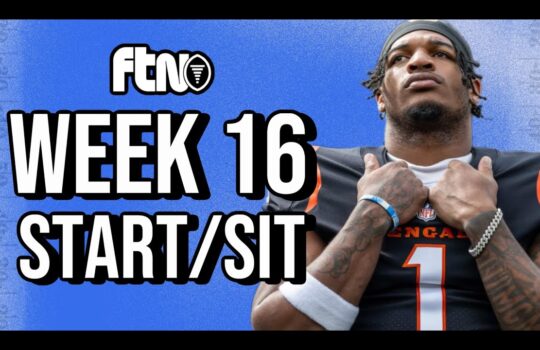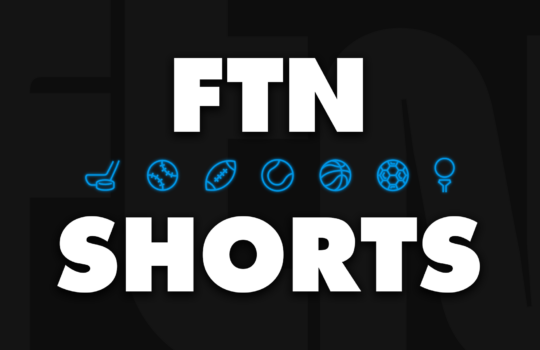
Tight end is quite possibly the most frustrating position in fantasy football. You can use one hand to count the number of reliable players at the position, and if you don’t have one of these guys you’re desperately trying to find one. That goes doubly true in dynasty, where managers are reluctant to ever part with productive options.
The problem is acquiring one of these established guys doesn’t come cheap. It’ll cost an arm and a leg to acquire a guy like Mark Andrews or Kyle Pitts and let them anchor the position for years to come, and their fantasy owners likely don’t want to let go of them (for good reason).
So what’s the best way to fill a void at a tricky position without overpaying? Here are a couple outside-the-box tactics you can use to plug that pesky hole in your roster.
Take the Shotgun Approach
The easiest way to fill a hole on your dynasty roster is by acquiring as many darts as you possibly can and throwing them at the same position. Targeting one specific position may seem contrary to the golden rule of “don’t draft for need,” but there are ways to take this approach without sacrificing your premium draft capital.
Trading down in your rookie draft is a fantastic way to pull this off. If you can manage to move down just a few spots without facing a tier break, you can pick up some later picks and then use those late picks to target the tight end position. Since these are “bonus” picks, it’s a lot easier to justify reaching for a specific position, especially when hit rates in later rounds of drafts are so low anyway.
Capitalize on Others’ Impatience
The tight end position typically takes longer to develop than almost any other fantasy-relevant position. Rather than letting this development time be a source of frustration, there are ways to use it to your advantage.
While it’s not easy to watch a player accumulate minimal points on your taxi squad or at the end of your bench, it’s easy to forget that your leaguemates feel that same level of impatience. When you’re negotiating trades for other players, try convincing your trade partners to throw in a bench tight end who hasn’t broken out yet. These are the types of players fantasy managers tend to give up on prematurely, and for you it’s an easy way to take another low-cost crack at a tricky position. This tip works particularly well if you’re negotiating with a league mate who already has an established tight end in their starting lineup.
It’s important to remember that every part of your fantasy team – your players, picks, roster spots, etc. – is an asset. When you need to address a need, don’t be afraid to use those last few roster spots as an asset you can use to improve a struggling position.
Target Quarterbacks, But Go Against the Grain
In dynasty formats, it’s typically not a wise strategy to let a player’s landing spot outweigh their individual talent. However, it’s hard to deny the idea of a player catching passes from an elite quarterback sounds much more exciting than drafting one from a replacement-level talent. Unfortunately, the cost to acquire a tight end tethered to a superstar quarterback is typically very high.
So how can you capitalize on situations without overpaying?
Instead of looking for quarterbacks who are going to score the most fantasy points, find value by targeting less exciting quarterbacks who throw the ball to their tight ends. One prime example here is Carson Wentz. Not many people in the fantasy community are gushing over the production Wentz will bring to the Commanders in 2022, but one thing Wentz loves to do is target his tight ends. For years, Wentz’s favorite target in Philadelphia was Zach Ertz, and if his tendency to target the position continues in a Washington offense with minimal target competition, it could be a good sign for Logan Thomas.
While he likely won’t finish the season as an elite option, Thomas is a prime candidate to exceed expectations in 2022. His age and injury history mean you may need to plug the tight end hole again shortly, but it also means he can potentially fill a hole at a very low cost.
When Evaluating Young Players, Follow the Snap Counts
One of the reasons tight ends take longer to break out is because of their varied roles in an offense. The nature of the tight end position means they need to possess the skills of both a wide receiver and an offensive lineman. Unfortunately, a lot of the best pass-catching tight ends aren’t proficient blockers early in their careers and they struggle to get on the field.
A less-heralded way to identify breakout tight ends is by following snap counts. While blocking doesn’t directly translate to fantasy points, improvements as a blocker lead to increased snap counts, which in turn lead to increased opportunities for fantasy points. It’s hard for a player to score points when they’re sitting on the sideline, and we can use snap counts as a proxy to measure a coach’s trust in a young tight end, which can eventually lead to increased opportunities in the passing game.
A 2022 breakout candidate who fits this trend is Cole Kmet. 2020 was Kmet’s rookie year and he played on just 56.3% of Chicago’s offensive plays with most of those snaps coming in the second half of the season. Fast forward to 2021, and Kmet was on the field for 83.3% of snaps. The Bears’ offense wasn’t pretty last year, but it’s clear Kmet has a major role in it. If Justin Fields can take a step forward and elevate the offense in his second year, Kmet should have every opportunity to be a primary beneficiary.





























































